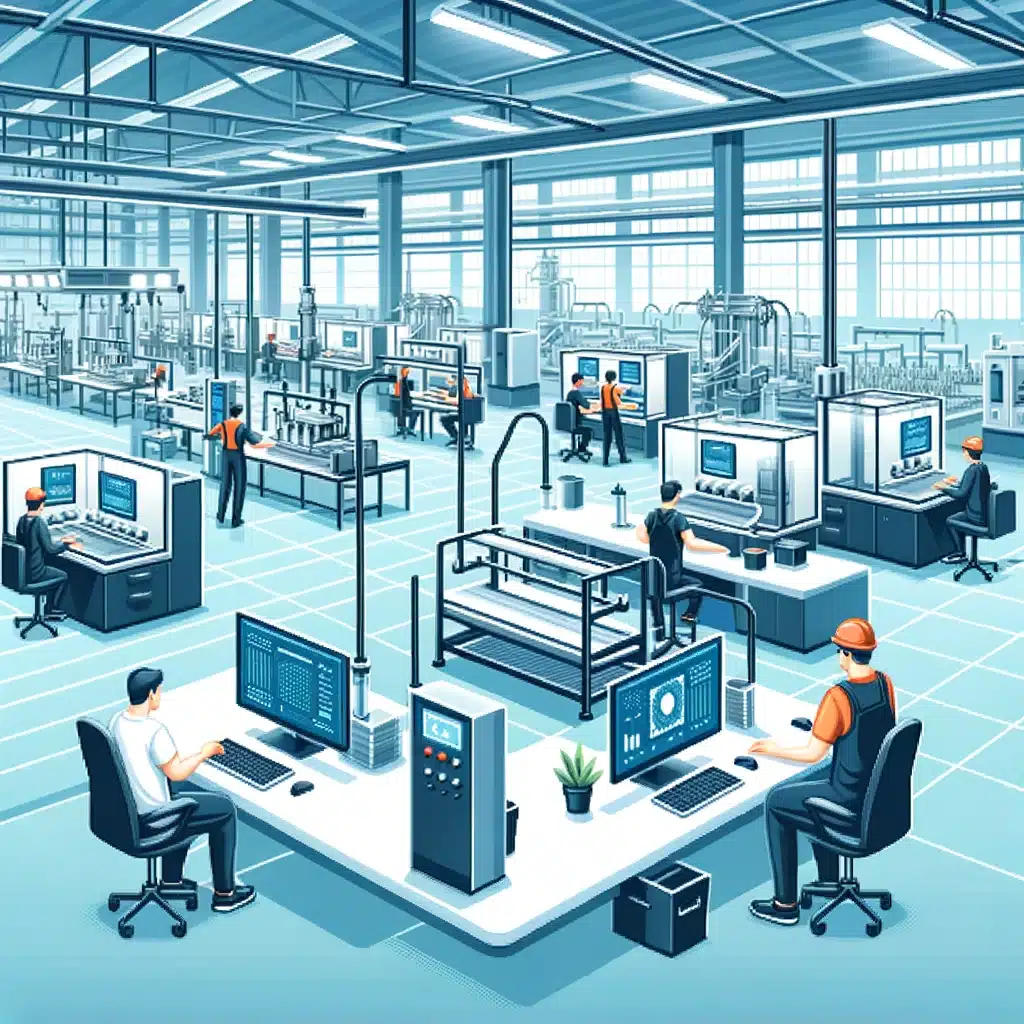Description
Ergonomics in the Factory: Prioritizing Worker Safety and Efficiency Through Design
In modern manufacturing environments, the importance of ergonomics—the science of designing workspaces to fit the workers—has become increasingly recognized as a key element of operational efficiency and worker safety. This extensive exploration delves into how ergonomic practices in factories not only prevent injuries but also significantly enhance worker comfort and productivity, fostering a more sustainable work environment.
The Foundation of Ergonomics in Manufacturing
Ergonomics in manufacturing focuses on modifying the workplace to suit the physical needs of workers, reducing the likelihood of injuries and enhancing work efficiency. It involves the strategic design of tools, equipment, workspaces, and tasks to align with human body mechanics, strengths, and limitations.
The integration of ergonomic principles aims to minimize the physiological stress on workers’ bodies, particularly in high-risk areas such as repetitive strain injuries, back injuries, and musculoskeletal disorders which are prevalent in factory settings due to repetitive and often strenuous tasks.
Consequences of Neglecting Ergonomics
Ignoring ergonomic principles can lead to a range of negative outcomes:
- Increased Risk of Injuries: Non-ergonomic working conditions significantly heighten the risk of physical injuries, leading to musculoskeletal problems such as back pain, carpal tunnel syndrome, and tendonitis.
- Reduced Worker Productivity: Physical discomfort and injury lead to less efficient work output and greater error rates.
- Higher Operational Costs: Increased injuries result in higher healthcare and insurance costs, alongside costs associated with absenteeism and worker turnover.
Ergonomic Improvements in Practice
To achieve optimal ergonomic conditions in a manufacturing facility, several focus areas need attention:
- Workstation Layout and Design: Ensuring that workstations are adjustable and fit the diverse physical dimensions of the workforce. This includes providing adjustable seating, adequate leg room, and reachable controls without unnecessary stretching or bending.
- Ergonomic Tool Design: Implementing tools designed to reduce strain, such as lightweight tools, ergonomically shaped handles, and tools that require minimal force to operate.
- Optimal Task Design: Designing tasks that allow for alternating between different physical positions and incorporating sufficient breaks to prevent fatigue. Task rotation is also beneficial, allowing workers to engage different muscle groups.
- Proper Material Handling Techniques: Training workers in safe lifting techniques, providing equipment such as lifting aids, and designing workflow to minimize manual material handling.
Steps to Implement Effective Ergonomic Practices
The implementation of effective ergonomic practices requires a structured approach:
- Ergonomic Assessment: Conduct comprehensive assessments to identify ergonomic risks and areas for improvement.
- Worker Involvement: Engage workers in the design and review process to ensure their insights and specific needs are considered. This collaborative approach ensures that implemented changes are practical and beneficial.
- Ergonomic Training: Regular training sessions should be conducted not just on how to use ergonomic equipment but also on maintaining optimal postures and practices to prevent injury.
- Regular Review and Adaptation: Ergonomics is an ongoing process. Regular review and adaptation of ergonomic practices are necessary to accommodate new technologies, processes, and worker feedback.
Broader Benefits of Embracing Ergonomics
The adoption of ergonomic practices brings several broader benefits:
- Enhanced Worker Morale and Engagement: Workers in ergonomically sound environments tend to have higher job satisfaction and are more engaged in their work.
- Regulatory Compliance: Adhering to ergonomic standards helps comply with health and safety regulations, avoiding potential legal and financial penalties.
- Sustainability of Workforce: By reducing physical wear and tear, ergonomics helps in maintaining a healthier, more capable workforce over the long term.
Conclusion
Ergonomics is not merely about adjusting the height of a table or the design of a tool. It’s about creating an environment that fundamentally enhances the well-being and productivity of workers. For modern factories, investing in ergonomic practices is not just an ethical priority but a business imperative that yields substantial returns in terms of reduced injuries, improved worker efficiency, and overall operational excellence. As factories continue to evolve with technological advancements, the role of ergonomics will become even more central, underscoring its importance in the sustainable and humane manufacturing landscapes of the future.






